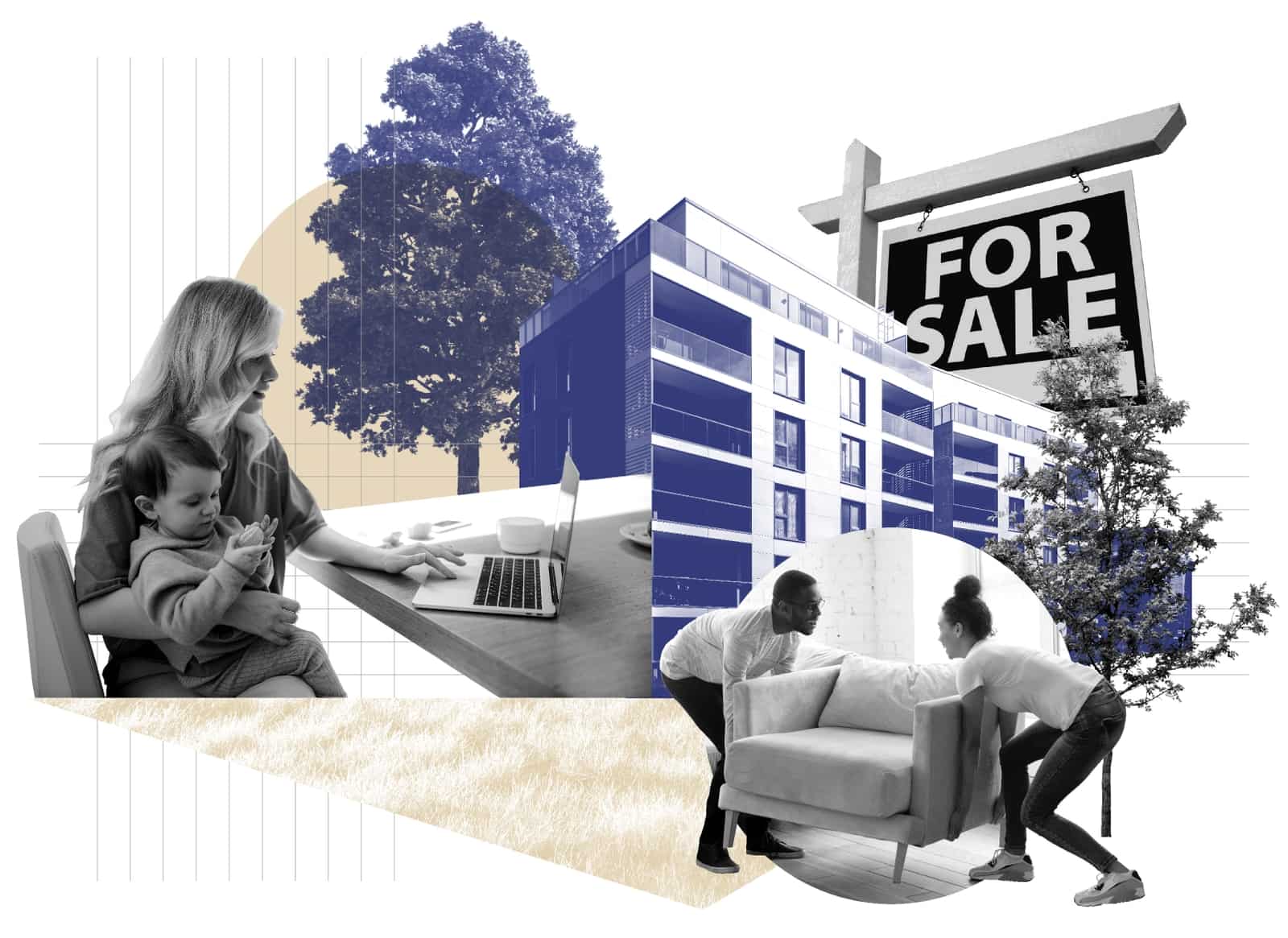Read The Great American Post-Covid Shakeup Here

At The Brand Guild, we’re always looking forward to what’s next so our clients across consumer lifestyle, food and beverage, and commercial real estate can be proactive and continue to break new ground.
In our Fall 2020 trend report The State of Brand, we correctly predicted that extra time spent indoors during quarantine would result in a renewed focus on the home and that purpose-driven brands would become mission critical. This, alongside several other key trends we cited in the report, have all been accelerated by the pandemic.
As Covid restrictions continue to wane, we took another look at consumer behaviors — but this time we focused on real estate. Why?
- Real estate experts are the ultimate futurecasters. Developers plan projects years in advance and need to be attuned to consumer trends in order to predict future market desires. Well before we entered “unprecedented times,” they’ve had to continuously look ahead to understand culture and predict behavior to plan out new spaces that can meet future needs.
- The way we use spaces — whether at home, at work, or in third places like parks and restaurants — reflects our changing priorities. And in a time where nearly every facet of life has continually changed, the ways in which real estate adapts to accommodate shifting norms says a lot about who we are and where we’re headed.
- With more than a dozen of the world’s largest and most innovative real estate firms in our client portfolio, we were able to go straight to the experts to uncover insights on the future of consumers and the spaces we interact with every day.
Over the past decade, “Live, Work, Play” has become shorthand for American priorities. But after the past 18 months, we sensed that order was shifting, as Americans have refocused on the home and demanded better work-life balance.
Turns out, we were right. We conducted a national survey of about 1,000 Americans, and they agreed: It’s no longer Live, Work, Play. It’s Live, Play, Work.
Our new report investigated how Americans are living their lives, approaching work, and spending their free time — and it revealed much more about both real estate industry trends and consumer trends.
Here are our top five takeaways:
1. Companies need to keep up with the new “Live, Play, Work” structure to attract and retain employees: Americans no longer want to structure their lives around work. Instead, they demand flexible workplaces that accommodate their personal lives. With the Great Resignation looming, it’s imperative that employers listen and work with their employees to strike the right balance.
2. Americans are going to continue demanding COVID-era amenities in their homes: Expect greater demands for outdoor space, home offices, and strong WiFi to allow Americans to accomplish everything from the comfort of home.
3. Now that there’s less need to leave the home for essentials, hospitality and retail businesses need extra appeal: Americans are eager to get back to in-person experiences like restaurants, shopping, and events – but businesses will need to play into consumers’ desire for socialization, instant gratification, and new experiences to beat out the convenience and, at times, affordability offered by ecommerce and food delivery.
4. The conscious consumer is here to stay: The cohort of conscious consumers grew during the course of the pandemic, with many Americans saying they’ve become more conscious of what they buy and whom they buy from. This is especially true among Millennials, and even more so Gen Z, who now collectively make up the majority of U.S. consumers — and this group will only continue to grow in purchasing power.
5. The new keyword is “dynamism”: The new priorities of Live, Play, Work aren’t rigid — people expect to be able to shift back and forth between them more easily than ever. Beyond hybrid workstyles and design accommodations, clear communication between consumers and businesses, employers and employees, developers and renters, is key to ensure these flexible lifestyles are being met.
It remains to be seen whether these shifts are a temporary reaction to the pandemic or the dawn of a lasting reprioritization. But what can’t be ignored is that consumers see this as a seismic shift, and businesses (from real estate developers who are building the next generation of homes, to retailers, who need to compete with the convenience of Amazon) need to meet consumers where they are — and do it quickly.